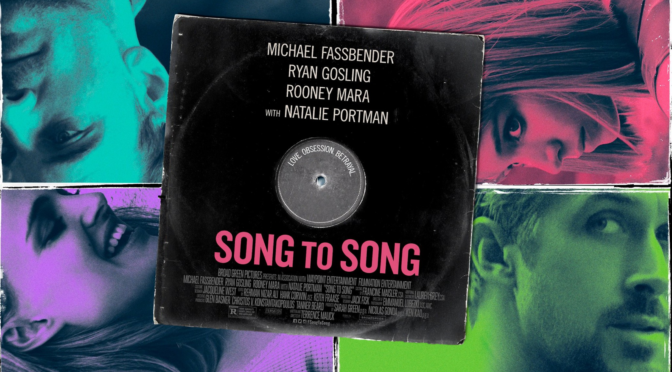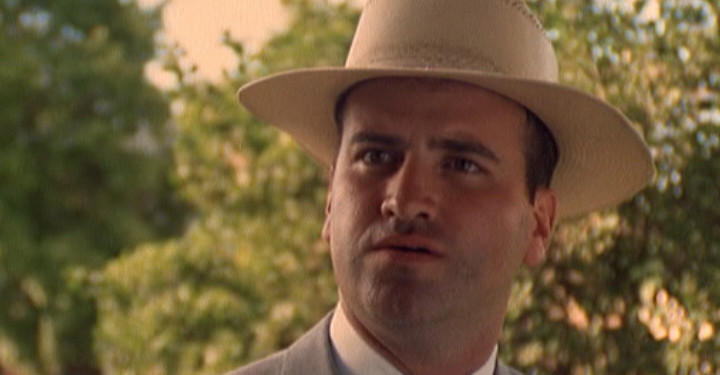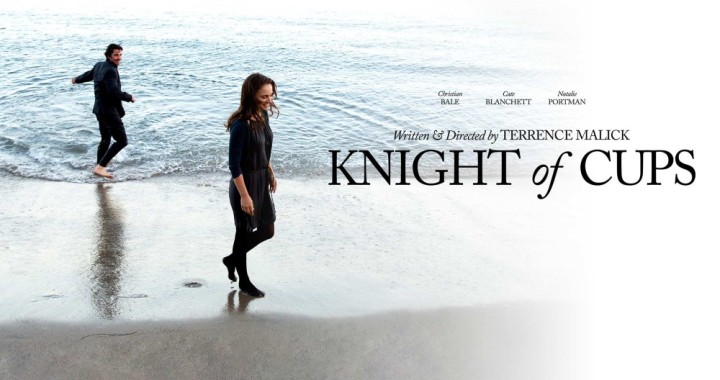Continuing his rapid pace of releasing movies, Terrence Malick (The Thin Red Line) sets his newest film in the music scene. It features a star-studded cast with Michael Fassbender (Shame) as a music producer, Ryan Gosling (Drive) and Rooney Mara (Lion) as performers, and Cate Blanchett (The Lord of the Rings) and Natalie Portman (Black Swan) as other women who get wrapped up in their series of short-lived affairs.
The film’s “plot” is barely present and the few discernable aspects are disappointing. Supposedly, Song to Song is a romance, but there is nothing remotely romantic shown. Malick is known for not using traditional scripts. He relies on actors to improvise scenes based on only the setup and never have the pitfalls of this approach been more apparent than the scenes of what I can only assume was intended to be romantic chemistry. The actors have big smiles on their faces as they attempt to have authentic, playful interactions. Instead, they come off as annoying or severely cringe-inducing, best exemplified in a scene where Fassbender hops around a beach screeching and scratching like a monkey. As painful as these scenes are to watch, I can only feel sorry for the actors that had to perform them.
There is also a worrying trend regarding the treatment of women. Malick has been known for infantilizing his female characters. They are often young, innocent girls or adult women who display a pure naivete, but this previously appeared to come from a good place. It seemed like a celebration of innocence rather than a restriction on what women could do, but his new films have revealed some disturbing ideas. As in his last film, the women here are treated as sexual objects to be used, cast off, then reused when needed. They may have their own motivations but Malick’s portrayal shows them as little more than ways for his hedonistic male characters to satisfy their own desires.

Visuals have always been Malick’s strong suit, but even that seems to be deteriorating. Using his regular cinematographer, the incredibly talented Emmanuel Lubezki (Gravity), he is again able to create some stunning natural-light footage. Yet, there are a few confusing choices that mar his normally perfect images. Several scenes were shot on location at the music festival Austin City Limits and some use GoPro-like cameras. This was likely done to get closer to the action of the mosh pits, but the lower-resolution fish-eye shots do not mesh with the rest of the film. Their low-quality is a glaring fault. There is also a strange overuse of oblique angles. Many scenes are off-kilter close-ups of an actor’s face. Perhaps this was done to convey the subjectivity of the character’s thoughts, but instead it is only distracting. These unfortunate choices detract what would otherwise be the film’s greatest strength.
One of the few changes to Malick’s style is his use of music. His usual ethereal, orchestral score is still present, but, due to the setting, more modern music is also included. These songs offer some desperately needed energy to the film. Their use helps add variety to the soundtrack and breaks up the overused strings. It was perhaps the only modernizing of Malick’s approach throughout the film.
Song to Song is almost a repeat of Knight of Cups but set in the music world instead of the film industry. Like that movie, there are people living in exorbitant wealth while pursuing their dreams that are inexplicably mopey. Characters go after their desires in selfish ways and, when the obvious consequences occur, Malick expects the audience to sympathize with them. But, why would we? He, like his characters, appears to be living in a bubble. There are no sympathetic or relatable characters here, only sketches of vague emotions. The frequent voiceovers are filled with pretentious, pseudo-philosophical thoughts that are often unrelated to anything onscreen and read like midnight scrawlings from the director’s bedside notebook. His narrative films after the flawed, but magnificent The Tree of Life, if you can call them narrative films, have been a continual letdown. Malick’s work has sunk further into incessant navel-gazing and his visual style is no longer enough to make up for it. Song to Song is another exercise in Malick’s recent string of insufferable self-indulgence.

1/5 stars.





